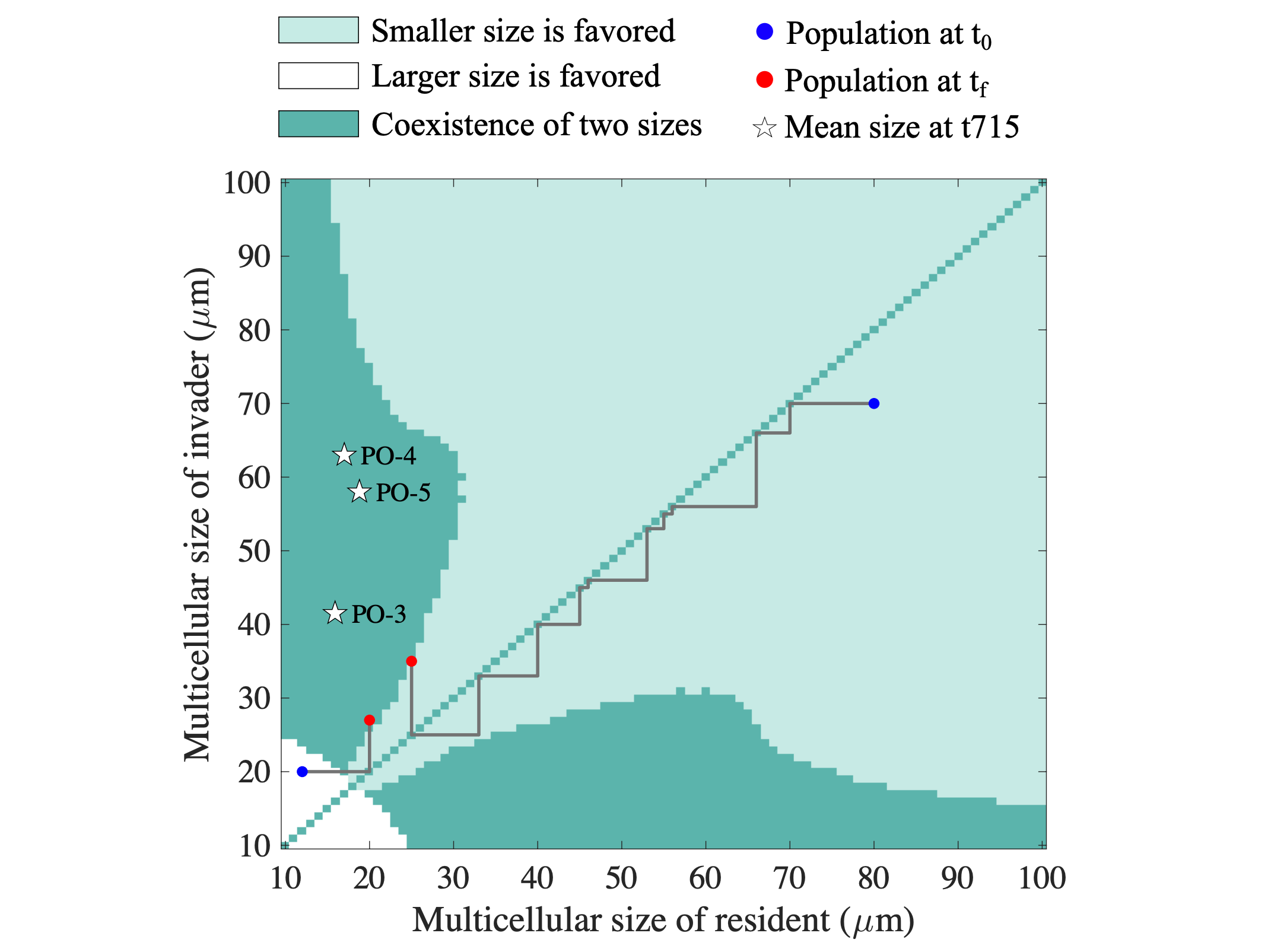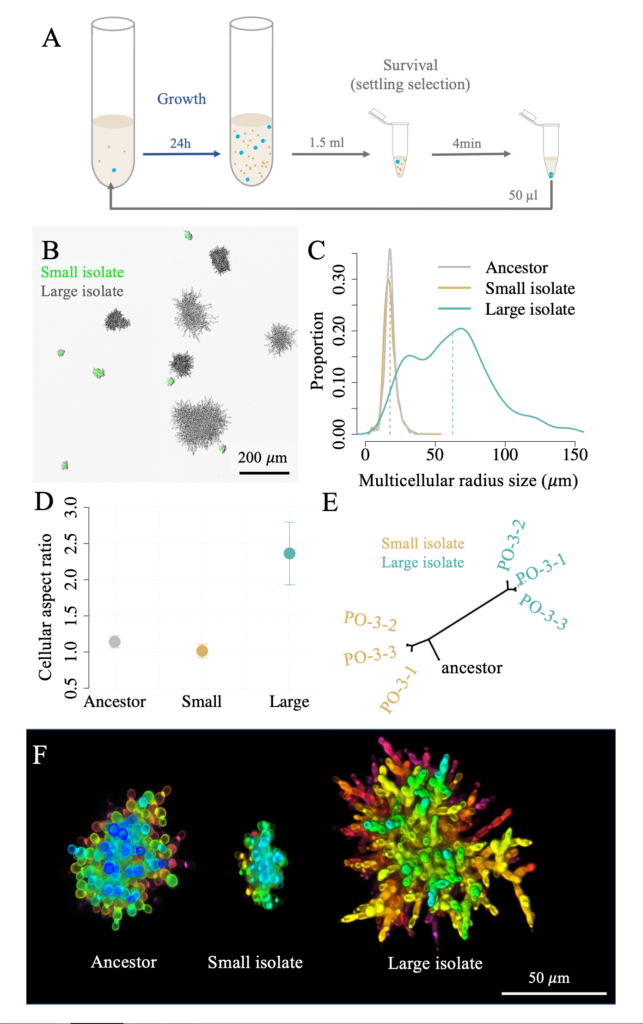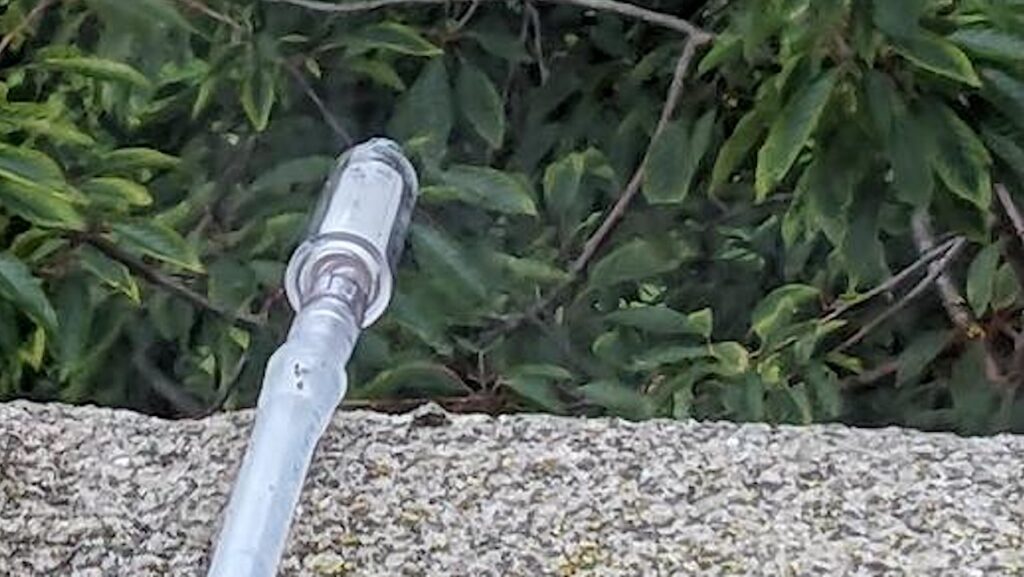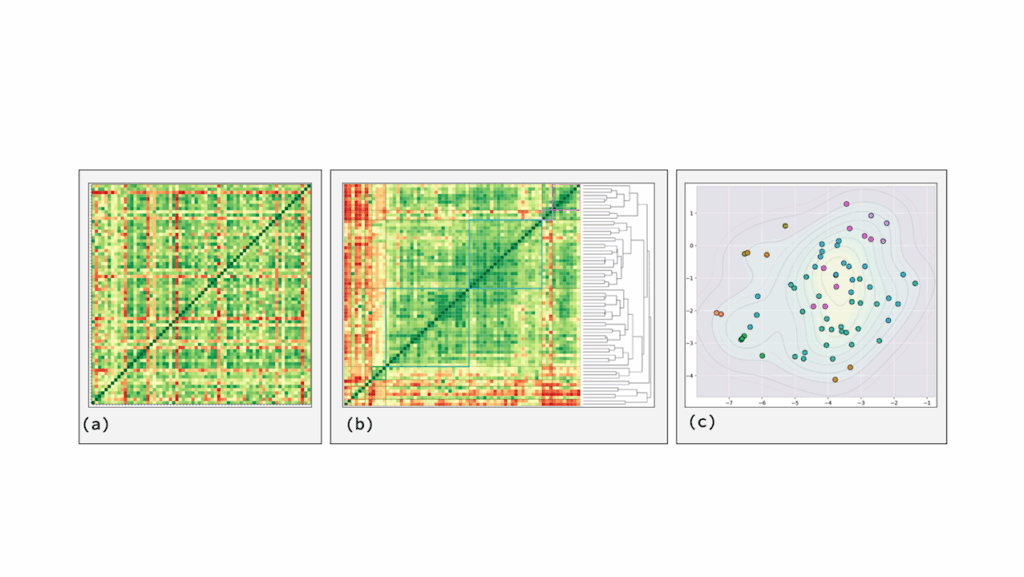Emergence And Maintenance Of Stable Coexistence During A Long-term Multicellular Evolution Experiment

The evolution of multicellular life spurred evolutionary radiations, fundamentally changing many of Earth’s ecosystems.
Yet little is known about how early steps in the evolution of multicellularity transform eco-evolutionary dynamics, e.g., via niche expansion processes that may facilitate coexistence. Using long-term experimental evolution in the snowflake yeast model system, we show that the evolution of multicellularity drove niche partitioning and the adaptive divergence of two distinct, specialized lineages from a single multicellular ancestor.
Over 715 daily transfers, snowflake yeast were subject to selection for rapid growth in rich media, followed by selection favoring larger group size. Both small and large cluster-forming lineages evolved from a monomorphic ancestor, coexisting for over ~4,300 generations.
These small and large sized snowflake yeast lineages specialized on divergent aspects of a trade-off between growth rate and survival, mirroring predictions from ecological theory. Through modeling and experimentation, we demonstrate that coexistence is maintained by a trade-off between organismal size and competitiveness for dissolved oxygen.
Taken together, this work shows how the evolution of a new level of biological individuality can rapidly drive adaptive diversification and the expansion of a nascent multicellular niche, one of the most historically-impactful emergent properties of this evolutionary transition.

Emergence and long-term coexistence of large and small snowflake yeast phenotypes. (A) Daily transfers consist 24h of batch culture, in which selection favors faster growth, followed by a round of settling selection for larger group size. (B) While the experiment started from a monomorphic multicellular ancestor, after 715 rounds of selection, the population is composed of large and small (GFP for ease of identification) phenotypes. (C) We measured the cluster size distribution via microscopy. Small-sized snowflake yeast (yellow) are similar in size to their ancestor (gray). Large-sized snowflake yeast isolates (teal), in contrast, are 48 times larger. (D) The Large genotype evolved highly elongate cells, with a mean aspect ratio (length to width) of 2.36, while the Small genotype became nearly perfectly spherical (aspect ratio 1.01) from the ancestor’s slightly oblate cells (aspect ratio 1.14). Bars represent one standard deviation. (E) The phylogeny of Small and Large genotypes shows they do not share any mutations, demonstrating that the lineages leading to each have been coexisting for the duration of our long-term evolution experiment. (F) Differences in cellular morphology between the multicellular ancestor, Small and Large genotypes shown via confocal microscopy. Note that the Large cluster shown here is smaller than its maximum possible size (this cluster is in the 40th percentile of size). Color indicates depth.
Rozenn Pineau, David Demory, Eric Libby, Dung T Lac, Thomas Day, Pablo Bravo,Joshua Weitz, Peter J. Yunker, G. Ozan Bozdag, William C. Ratcliff
https://www.biorxiv.org/content/10.1101/2023.01.19.524803v1
Astrobiology








